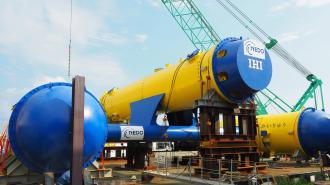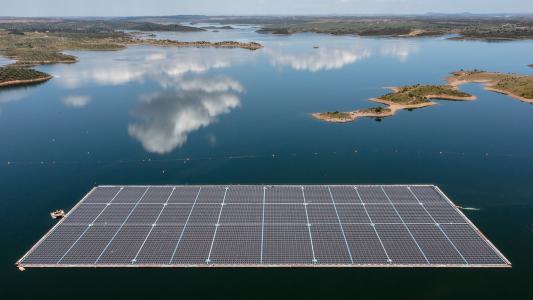Researchers in Japan hope that deep ocean currents could become a new source of clean energy. They recently wrapped up the demonstration of a massive prototype generator that just spent three years underwater off the coast of Japan, capturing the slow but steady power of the deep ocean.
Deep ocean currents: The same method we use to harness the power of the wind — place large turbines in its path and use generators to convert the mechanical energy of the spinning blades into electricity — can be used to generate electricity from water currents.
We’ve already seen the development of systems that make use of tidal currents, which are found near the water’s surface, but those can be inconsistent.
“The biggest issue for ocean current turbines is … generat[ing] power economically out of currents that are not particularly strong.”
Angus McCrone
Deep ocean currents are steadier, but also slower — the Kuroshio Current off Japan’s eastern coast, for example, is one of the world strongest deep ocean currents, and it still only flows about half as fast as some tidal systems (1.5 meters per second vs. 3 mps).
Add in the high cost of building and maintaining underwater systems, and you’ll understand why research into deep ocean currents as a source of clean energy has lagged well behind solar, wind, and even tidal energy.
“The biggest issue for ocean current turbines is whether they could produce a device that would generate power economically out of currents that are not particularly strong,” Angus McCrone, a former BloombergNEF chief editor and marine energy analyst, told Bloomberg.
The idea: In 2011, Japan’s New Energy and Industrial Technology Development Organization (NEDO) and IHI Corporation set out to prove that deep ocean currents could be an economically viable source of electricity by developing a prototype system called Kairyu.
“People may say that this is just a dream, but we need to try everything to achieve zero carbon.”
Ken Takagi
The 330-ton device looks a bit like an airplane (and weighs as much as a fully loaded 747), with a cylindrical pod containing a buoyancy system where the fuselage would be. On either side of that pod — roughly where you’d find a plane’s jet engines — are two more pods with large turbine fans on their ends.
As deep ocean currents spin the turbines’ blades — which rotate in opposite directions to keep Kairyu in place — the system generates electricity. That power could then be transmitted via a cable to the seabed and along the ocean floor to the main islands of Japan.

What’s new? NEDO and IHI launched a demo of Kairyu in 2019, anchoring it to the ocean floor so that it floated between 100 to 160 feet below the water’s surface, in the path of the Kuroshio Current.
That demo wrapped up in February 2022 and met its goal of proving that Kairyu could produce 100 kilowatts of stable power. The developers are now looking to scale up the system in the hope of a commercial launch in the 2030s.
The bottom line: Tapping into the clean energy potential of deep ocean currents isn’t likely to be cheap or easy, but according to Ken Takagi, a professor of ocean technology policy at the University of Tokyo, the cost could be worthwhile for Japan.
“Japan isn’t blessed with a lot of alternative energy sources,” he told Bloomberg. “People may say that this is just a dream, but we need to try everything to achieve zero carbon.”
We’d love to hear from you! If you have a comment about this article or if you have a tip for a future Freethink story, please email us at [email protected].






